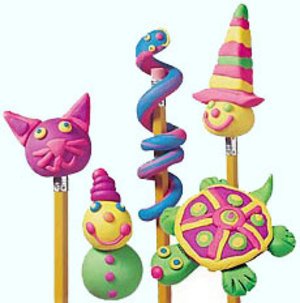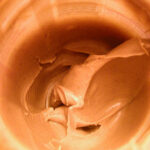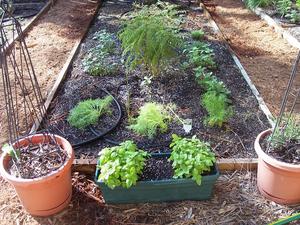Clay is a great material for young artists. It’s fun, physical and helps develop spatial reasoning and manual dexterity, not to mention artistic ability.
So what kind of clay should you buy your own little Michelangelo? Here is a short review of the different types of clay available at most art stores and their suitability for children.
1. Play-Dough
Play dough is a terrible sculpting material. It’s only useful quality is that it is extremely soft and therefore a good starting point for very young children. As soon as your child begins doing more than just squishing it like a toy, it is time to move on to a better clay.
2. Plasticlay and other oil-based clays
Oil based clays for children can be found in a basic assortment of colors. This clay is very pliable when warm, although it takes some work to make it that way. To help very young children, squeeze the bars of clay into balls and work them until they are soft.
Oil clay is excellent for creating detail. It has been used, in an almost identical form, for centuries by artists such as August Rodin, to make original forms for bronze casts.
Unfortunately, oil clay has several major drawbacks. As you will quickly learn, colored oil clay, particularly red, stains hands, counters, and ends up everywhere. If the clay gets in your carpet, it will be there forever.
The other downside to oil clay is that nothing your child makes will last. Trust me on this. No matter how carefully you try to take care of your child’s creations, eventually they will all get squished. This makes the clay great as a material for making play toys, but if you find that you have a seriously talented young artist on your hands, there is much better clay for them.
3. Ceramic clay, or “Earth clay”
Ceramic clay can be fired and kept forever. However, unless you want your child running through the house covered in mud, and believe me this clay is much like mud, do not give them this clay to use at home. Take them to a ceramics class and let the art teacher deal with the mess.
4 Sculpey and other polymer clays
Sculpey is polymer clay, which means that it is, in a sense, a form of plastic. This clay carries unique chemical properties that cause it to change from pliable to rock hard just by baking it in an ordinary oven. Don’t worry, Sculpey is safe and non-toxic.
Sculpey comes in a veritable rainbow of colors and is possibly the most popular craft clay on the market today. There are other brands of polymer clay, most notably FIMO, but they tend to be more difficult to work with, and are not as easy for children to use.
Sculpey is soft and squishy right out of the package, and sticks to itself with simple pressure. Once baked, the creations will be fairly durable, and if broken can be easily repaired with superglue.
It is excellent for making beads, pins, and wearable objects. The company has even recently released a new type of clay, which when baked, becomes a working eraser.
I highly recommend Sculpey over all other types of clay for children. With it, they can learn the perfection of detail, and you will be left with lifelong treasures of their most amazing years.





